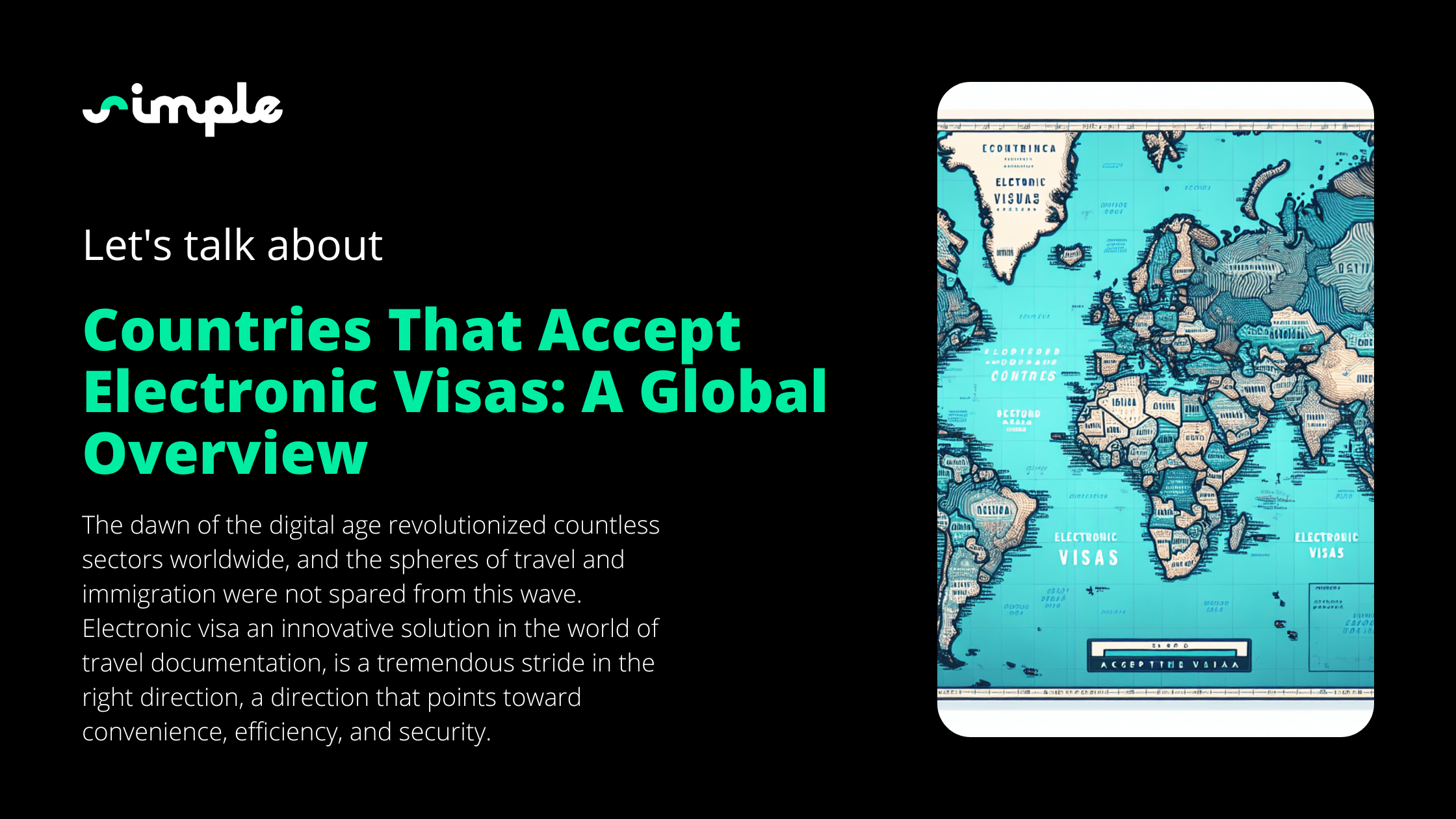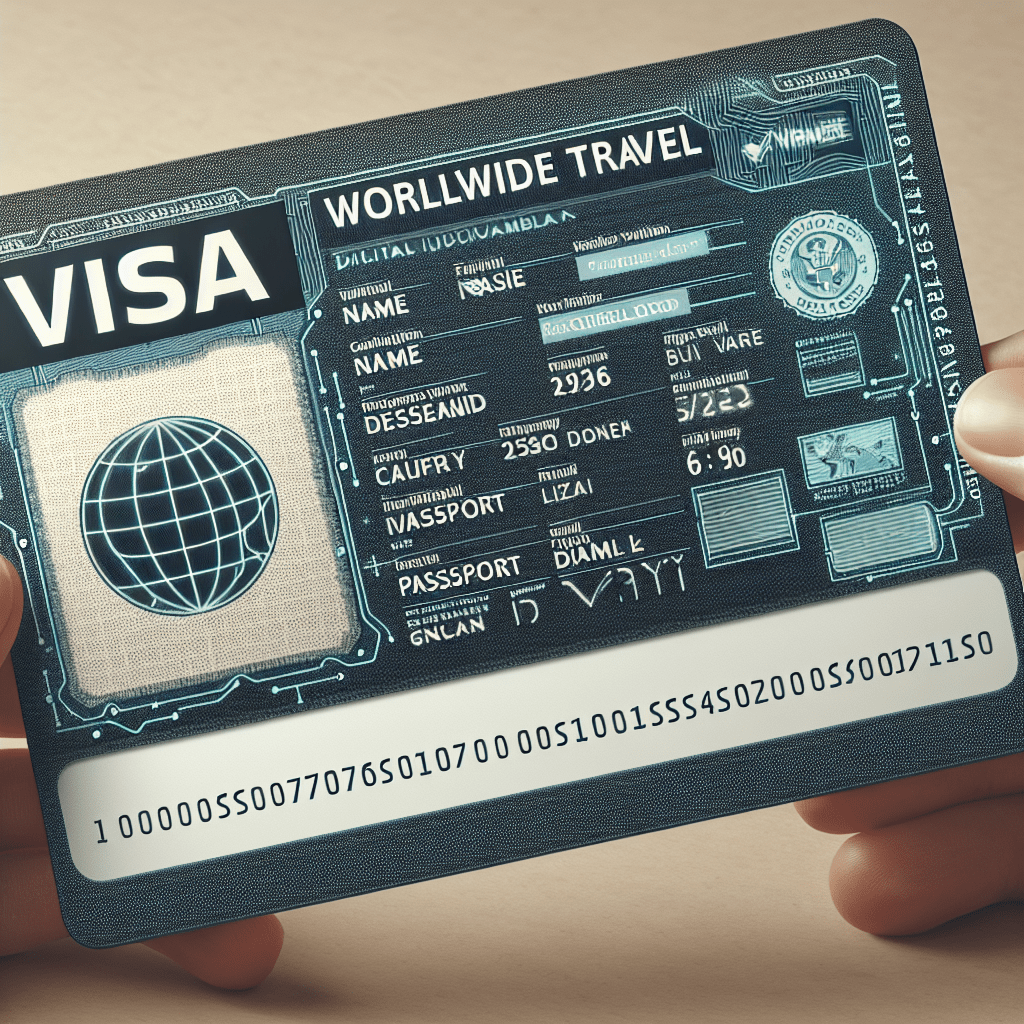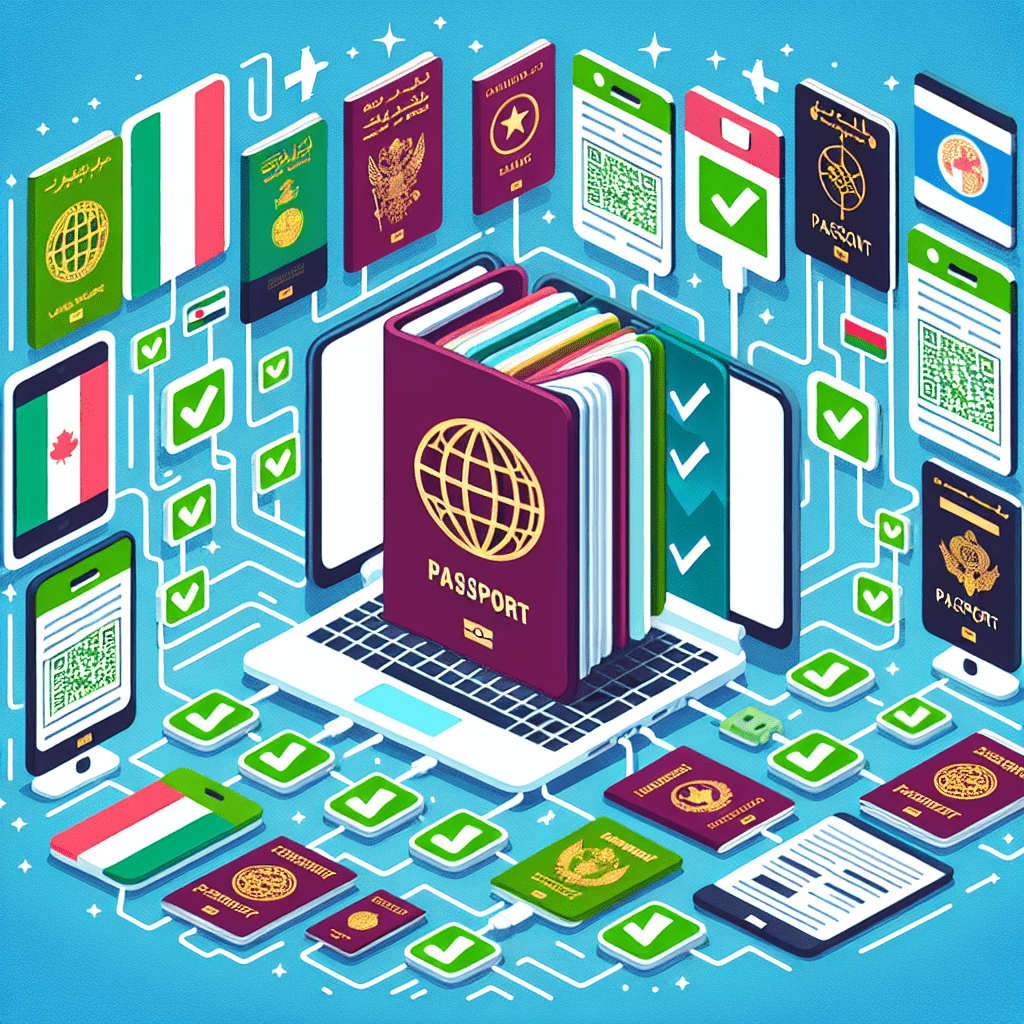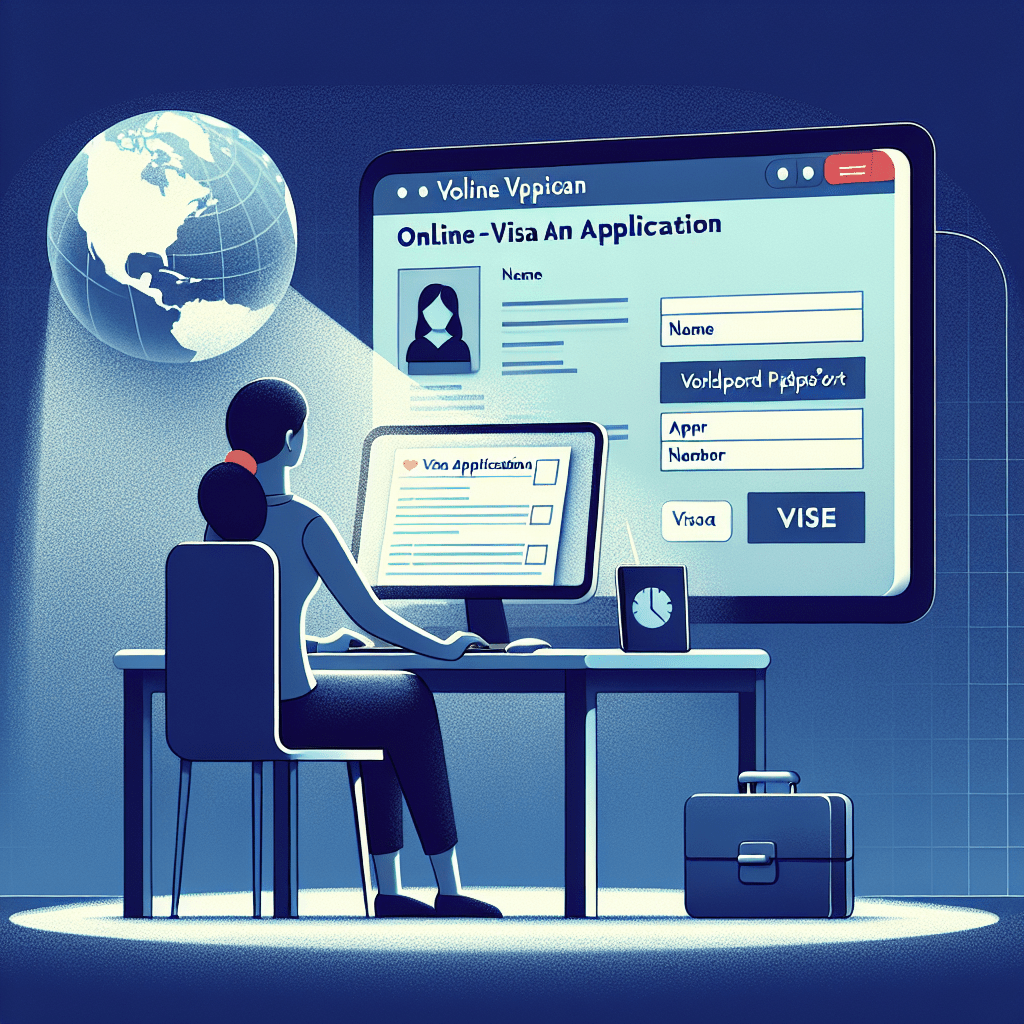Countries That Accept Electronic Visa : A Global Overview

The dawn of the digital age revolutionized countless sectors worldwide, and the spheres of travel and immigration were not spared from this wave. Electronic Visa, an innovative solution in the world of travel documentation, is a tremendous stride in the right direction, a direction that points toward convenience, efficiency, and security.
An Electronic Visa, commonly termed as an e-Visa, can be precisely described as an online platform that eliminates the physical paperwork. It allows governments to manage the visa applications of travelers efficiently while making the process hassle-free for applicants themselves.
Gradually, the digital travel document has been embraced, leaning towards instantaneous processes while minimizing physical contact, especially in this pandemic era. This remarkable rise in the adoption and acceptance of the Electronic Visa globally reflects its potential in shaping the future of global travel and immigration. It is widely perceived as the harbinger of a new era of digital immigration documentation.
However, despite its global adoption, understanding of the concept varies. This blog post aims to provide an exhaustive overview of the Electronic Visa system, laying a particular emphasis on the countries that have opened their borders to this advanced form of travel documentation.
This broad narration would also shed light on the benefits of this digital transformation and its impressive impact on various stakeholders, including travelers, governments, and immigration authorities. The scope of this blog is not limited to analysis but also provides insights about the e-Visa process, requirements, and the future it holds.

Exploring Countries with Established Electronic Visa Systems
As mentioned, the global trend towards adopting digital protocols has impacted the realm of travel and immigration immensely. To better understand the prevalence and nuances of Electronic Visas, let’s delve into an analysis of three specific countries that boast well-established Electronic Visa systems – Australia, the United States, and India.
Australia – eVisitor and Electronic Travel Authority
Application Process
The Land Down Under offers two types of Electronic Visas: eVisitor and Electronic Travel Authority (ETA). Both required the applicant to engage in an Online Visa Application process. The eVisitor system is reserved for European Union citizens and a few other European countries. Meanwhile, the ETA is available to citizens of over 30 countries, including the US, Canada, and Japan. The entire E-Visa Process is internet-based, involving filling out an online form and awaiting Digital Visa Approval. In most cases, this Instant Electronic Visa is processed within a few hours.
Restrictions and Validities
eVisitor and ETA both allow tourism or business visits but aren’t applicable for long-term stays or work. Holders of these visas can stay in Australia for up to three months per visit within a one-year period. Notably, these permits function as an Electronic Entry Permit, eliminating the need for stamp-like visas at Australian ports.
United States – Electronic System for Travel Authorization
Application Process

The United States uses the Electronic System for Travel Authorization (ESTA) for visitors under the Visa Waiver Program. This Web-based Travel Permit system automates the authorization of travelers aiming for short stays in America. The Online Immigration Documentation process demands candidates to fill out an online form with personal details and answer eligibility questions. Digital Visa Verification usually occurs immediately, but in some cases, it could take up to 72 hours.
Restrictions and Validities
ESTA grants travelers permission to visit the United States for up to 90 days per trip for tourism or business. Unlike traditional visas, ESTA operates as an Electronic Travel Clearance, simplifying travel for eligible citizens. It’s important to note that ESTA approval doesn’t guarantee entry but grants travel to a U.S. port of entry for further inspection.
India – e-Visa Scheme
Application Process
India’s Online Visa System breaks down into five categories – e-Tourist, e-Business, e-Conference, e-Medical, and e-Medical Attendant. The E-Visa Submission involves an online application, uploading passport page scans, and paying the visa fee online. This On-demand Immigration Permit typically gets validated within four business days.
Restrictions and Validities
India’s e-Visa depends on the category you apply to. For example, the Online Tourist Visa permits a stay of up to 90 days for most nationalities and allows double entries in most scenarios. The effective period of the e-Visa begins from the date of issuance and not from the date of travel to India.

Insight into Emerging Electronic Visa Countries
Along with countries that have well-established Electronic Visa systems, numerous nations are progressively joining the fray, trailblazing new paths in digital immigration protocols. Let’s explore the recent endeavours of Saudi Arabia, Brazil, and Vietnam in adopting Electronic Visa systems.
Saudi Arabia – Tourist e-Visa
Application Process
In a historic move towards promoting tourism, Saudi Arabia launched its Tourist e-Visa in 2019. The Online Visa Application has simplified the E-Visa Process for tourists drastically. Travelers are required to fill an online form, provide personal details, and make a payment online. Post the Digital Visa Approval, an Instant Electronic Visa is sent via email, expediting the visa procurement process for eager voyagers.
Advantages over Traditional Visa
Undoubtedly, Saudi Arabia’s Internet-based Visa Service offers immense benefits over traditional visa applications. The benefits extend from speedier processing times, less paperwork to the convenience of applying from anywhere. More importantly, it allows travellers to bypass the need to visit an embassy or consulate, saving both time and effort, globally.
Brazil – eVisa Pilot Program
Application Process
Brazil launched its eVisa pilot program for citizens of the US, Canada, Australia, and Japan. The applicants are required to complete an Online Immigration Documentation process, which demands relevant details and necessary document scans. Post-application, Digital Visa Verification happens within five business days, and the subsequent e-Visa is emailed to the candidate.
Advantages over Traditional Visa
Beyond doubt, Brazil’s introduction of the eVisa has made acquiring a Web-based Travel Permit much more straightforward and faster. This Electronic Travel Clearance cuts down on bureaucracies, curtailing wait times and standard diplomatic restrictions. A noteworthy advantage is its affordability, offering a relatively cheaper and efficient alternative to traditional visa applications.
Vietnam – e-Visa Program
Application Process
As a part of its modern visa policy, Vietnam offers e-Visas to tourists from 80 countries. An applicant has to fill out an Online Visa System form, attach required documents, and pay a non-refundable fee. After the E-Visa Submission, the Online Tourist Visa is usually processed within three business days.
Advantages over Traditional Visa
Undeniably, Vietnam’s e-Visa Program offers manifold advantages. Processing times are significantly reduced, and the On-demand Immigration Permit offers more transparency in the visa approval process. Devoid of the need to wait in queues at the embassy, acquiring an Electronic Entry Permit has never been easier. Pioneering the path towards digital immigration, the new-age system promises convenience and an enhanced user experience.

Analyzing Global Trends and Impact of Electronic Visas
As the world continues to digitize at a rapid pace, it’s essential to understand the global trends and the impacts of this digital drive in the field of travel and immigration. Delving into the potential growth, security concerns, and future prospects can offer a well-rounded picture.
Potential Growth Aspect
Ease and Accessibility
The transition to an Electronic Entry Permit is noted for its apparent ease and accessibility. Through simplifying the traditional processes into an Online Visa Application, the weary task of documentation becomes seamless. E-Visa Process significantly reduces the processing time and spares applicants from unnecessary bureaucratic hassles. The end result? An Instant Electronic Visa delivered right to your inbox.
Economic Influence
Electronic Visas also bear an economic advantage primarily by generating revenue through visa fees. Moreover, by making it easier for tourists to enter, countries catalyze their tourism industry. This Internet-based Visa Service can, therefore, propel economic growth by attracting a larger number of visitors and encouraging inbound tourism.
Security Concerns and Measures
Data Protection
While the concept of Online Immigration Documentation has been well-received, concerns linger, particularly pertaining to data protection. As all sensitive travel-related data are stored digitally, measures to protect this information become crucial. Many countries have implemented robust data protection protocols to ensure the safety and security of the user’s data.
Fraud Prevention
Along with data protection, countering fraud in online visa applications is of prime importance. Digital Visa Verification is a powerful tool here, ensuring the integrity of the E-Visa Submission process. Countries are investing in advanced measures to prevent any fraudulent activity and ensure the authenticity of Electronic Travel Clearance.
Future Outlook and Developments
Technological Innovations
The world of Electronic Visas is set to witness further innovations. Artificial intelligence, machine learning, and data analytics are some of the potential drivers that could significantly enhance the Online Visa System. These technologies could streamline the visa application process and provide better user experiences, mapping the road to a more efficient Digital Travel Authorization process.
Policy Changes
Policy changes will also shape the future growth and direction of electronic visas. Trends reveal a shift towards more liberal visa policies, with governments realizing the immense potential and advantages tied to the Online Tourist Visa. Balanced against border security concerns, these policy changes could mould the migration landscape globally, marking the dawn of a new era.

Wrapping Up: The Electronic Visa Revolution
Having traversed the world of Electronic Visas, we find ourselves standing amidst a digital revolution that is transforming travel documentation globally. From Australia’s pioneering eVisitor and Electronic Travel Authority to India’s innovative e-Visa Scheme, countries have leveraged technology to revolutionize visa protocols, delivering utmost convenience and efficiency.
The United States’ Electronic System for Travel Authorization, as well as reformed Electronic Visa countries like Saudi Arabia, Brazil, and Vietnam, testify the growing acceptance and popularity of this digital approach. These programs symbolize the global digital immigration trend where Online Visa Applications, quick Digital Visa Approvals, and Instant Electronic Visas are now becoming the new norm.
However, the digitization strides reach beyond individual countries and their immigration policies. The surge in Electronic Visas is shaping more than just travel. It is subtly yet profoundly affecting global diplomacy. With the ease of access and simplified procedures, countries are facilitating international relations, encouraging cultural exchange, boosting tourism, and stimulating economic growth. This forward swing is enhancing global connectivity, dismantling barriers, and promoting cooperation.
To conclude, Electronic Visas have ushered in a new era of seamless travel, proving to be a significant step towards efficient diplomatic relations and global unification. As we move forward, the Electronic Visa systems around the globe will continue to evolve and adapt, driven by technological innovations, policy shifts, and user needs. Throughout this journey, the core promise of Electronic Visas remains the same – a hassle-free, secure, and rewarding travel experience for all.